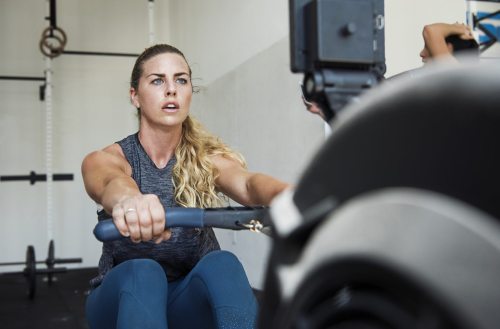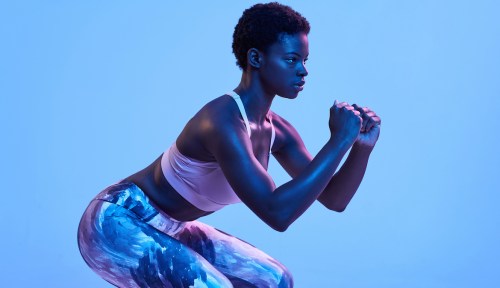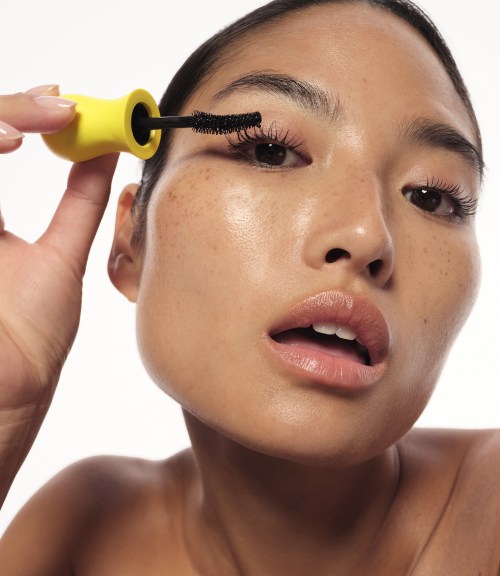Almost all novice rowers make the same mistake within seconds of strapping into a rowing ergometer, says world-class rower Libby Peters, the former associate head coach of the University of Pennsylvania women’s rowing team. As a member of the U.S. National Team, Peters won a bronze medal at the 2008 World Rowing Championships. Needless to say, she knows how to use a rowing machine properly.
Experts in This Article
personal trainer and director of education for Row House
Hollis Tuttle is a fitness instructor at CityRow, an indoor rowing franchise with locations across 10 states. She is also a former instructor at Mile High Run Club in New York City.
Libby Peters is the former associate head coach of the University of Pennsylvania women’s rowing team. She was also a member of the U.S. National Team and won a bronze medal at the 2008 World Rowing Championships.
It’s not entirely intuitive, but with practice, rowing becomes as natural as, say, breathing. And now that it’s no longer a sport reserved for Ivy League athletes, rowing machines are finally getting the recognition they deserve. From indoor-rowing fitness studios to at-home equipment, like high-tech gamified rowing machines and foldable rowing machines, stroking has become as ubiquitous as cycling or running. But perhaps the greatest appeal is that rowing machine workouts target multiple muscle groups—which is just one of many rowing machine benefits.
While providing a great full-body, low-impact workout, a rower is designed primarily to target your legs—but one of the most common rowing mistakes people make is tasking their arms with all the work, pulling with all their might, says Peters. She recommends rethinking the way you approach the movement.
“The thing to remember about rowing is, it’s basically like you’re lifting like a heavy load,” says Peters. “When you’re in a boat, the load is you and the boat itself; when you’re on the erg, the load is the resistance being created by the machine.” (This was an “aha!” moment for me when I heard it.)
Rowing terminology
If you’re new to the sport, you might hear people throw around rowing jargon like “erg” and “catch.” Here are several common terms related to rowing that you need to know, all of which you should keep in mind as you’re learning how to row properly.
Erg
Erg, ergometer, or rowing ergometer are terms commonly used to refer to a rowing machine or indoor rower.
Damper
The damper, located on the side of the rowing machine, is typically a lever that allows users to adjust the level of resistance. Resistance levels can range from one to 10.
Stroke
The stroke is the full range of motion that’s composed of four parts: catch, drive, finish, and recovery.
Catch
The catch is the start position of a rowing stroke, mimicking the point on a rowing boat where the oar blade first enters or “catches” the water.
Drive
The drive is the movement that follows the catch, and it typically involves the most exertion. This “working” period is when users pull the handle towards themselves, against resistance.
Finish
The finish is the final point of a rowing stroke, when the legs are extended, the handle is near the ribs, and the upper body is leaning back slightly.
Recovery
The recovery is a moment of rest between the finish and the next catch, when users return the handle to its starting position of a rowing stroke.
Strokes per minute
Strokes per minute (or SPM, for short) is the number of strokes a user is able to complete within a minute. This metric is typically be displayed on the monitor of a rowing machine.
SplitHow long it will take you to row 500 meters at your current speed.
How to use a rowing machine, with tips from a world-class rowing coach
Learning how to row properly will ensure you get the most from your rowing machine workouts and prevent injury. Below, Peters explains the best rowing machine form technique, from catch to finish. With practice, a rowing machine workout just might become one of your favorite forms of exercise.
But, first things first: Before you sit down on the sliding seat, make sure to adjust the rowing machine’s damper setting. If you’re a beginner, set it to level three, four, or five. Cruising at these lower speeds will keep you from hurting yourself when you’re just getting your sea (land?) legs, according to Peters.
- 1.The Finish: In rowing, we actually start at the “finish.” Strap in your feet, straighten your legs, and clutch the handle so it falls right at your lower ribs (your palms are facing down). Your upper body will lean slightly back at an 11 o’clock position.
- 2.The Catch: To move safely into the catch, slide your body forward until your shins are perpendicular to the floor and your knees are directly over your ankles. Your chest will be touching, or nearly touching, your thighs at the one o’clock position. Make sure to keep your upper body from rolling too far forward.
- 3.The Drive: Pay attention! This is the trickiest part. Start by pushing your feet into the rowing machine to straighten your legs. Once your knees are completely straight, pull your upper body back from the 1 o’clock position to the 11 o’clock position. Finish by pulling the handle in toward your lower ribs while keeping your core tight.
You did it! Peters warns that the whole movement pattern will feel clunky and mechanical at first. Once your body familiarizes itself, you can close your eyes and imagine you’re skimming across a placid lake, rather than sweating buckets at the gym or on your home rowing machine.
A 12-minute beginner rowing workout
If you’ve ever just hopped on an erg and tried to “go for it,” your muscles likely fatigued quickly, leading you to give up after just a few minutes. (Raises hand.) For those still familiarizing themselves with how to use a rowing machine, Peters recommends starting with intervals, interspersed with active recovery (still rowing, but slow enough to catch your breath).
“I really like interval workouts for young or new athletes,” she says. “I think you get more out of it by doing higher quality with shorter time or shorter distance.”
How long should a beginner use a rowing machine? You don’t need to hop on for an hour to get benefits. Here, Peters shares a 12-minute beginner rowing workout.
Minute 1: 16 to 18 strokes per minute (SPM)Minute 2: Active recoveryMinute 3: 16 to 18 SPMMinute 4: Active recoveryMinute 5: 16 to 18 SPMMinute 6: Active recoveryMinute 7: 16 to 18 SPMMinute 8: Active recoveryMinute 9: 16 to 18 SPMMinute 10: Active recoveryMinute 11: 16 to 18 SPMMinute 12: Active recovery
Once that feels super comfortable, you can progress to intermediate and, eventually, advanced rowing workouts.
Rowing machine benefits
There’s plenty to love about the rowing machine. For one, it offers a full-body workout that engages approximately 86 percent of your body’s muscles. Just what muscles does a rowing machine work, exactly? You can expect the workout to hit your lats, pecs, biceps, forearms, obliques, spinal erectors, quads, hamstrings, and calves.
The back-strengthening benefits can be especially helpful for those who sit slumped over a computer most of the day. The rowing motion directly counteracts that seated desk position, and can strengthen the back muscles you need to keep the spine upright, improving your posture.
Can you get in shape just by rowing? The short answer is, yes. Because in addition to strengthening your muscles, rowing benefits your heart health too, Caley Crawford, NASM-certified personal trainer and director of education of indoor-rowing studio Row House, previously told Well+Good. That’s due to the fact that rowing uses so many muscles at once, compared to other cardio options like running. “When more of your muscles are engaged, your heart has to work harder, which ultimately results in quicker results of heart health and improved heart rate recovery,” Crawford told us. Research on astronauts even found that a 30-minute rowing workout was just as effective for heart health in space as a 90-minute cycling session—take that, stationary, bike!
“When more of your muscles are engaged, your heart has to work harder, which ultimately results in quicker results.” —Caley Crawford, CPT
We often expect workouts that offer all these benefits to be pretty hard on the body. But one of the biggest bonuses of a seated row machine is that it offers low-impact exercise: You’re not pounding your joints like you would in a HIIT class. Not only is that helpful for people with issues like arthritis, Crawford told us it means you can recover more quickly between workouts—and therefore fit more workouts into your week (if you want).
If you’re still wondering, Is rowing a good workout? consider this: Combining strength and cardiovascular training, it makes for a pretty efficient exercise session. Plus, nowadays there are plenty of at-home rowers, like the Avrion rowing machine, that offer engaging classes through digital displays. Regardless of whether you’re primarily using a rowing machine for strength training, cardio, or just for fun, however, you need to make sure you know how to use a rowing machine correctly to ensure you’re getting the most from your workout.
Frequently asked questions
What muscles does a rowing machine work?
Rowing machine workouts primarily target the legs (including the quads, hamstrings, and calves), but they will also hit your arms, back, and core.
What shoes do I wear?
Although many gym-goers just hop on the rowing machine in their regular sneakers, investing in a pair of rowing shoes will help your feet feel more secure in the foot cradle.
Which is better—treadmill or the rower?
Whether you’re rowing or running, you’re promised an excellent cardiovascular workout. But there are key differences between the two exercises. If you have compromised vision, or you want a workout that’s easy on the joints, rowing might be an ideal option for you, Hollis Tuttle, the director of instructors at City Row and former fitness instructor at the Mile High Club, told Well+Good. She also says that rowing builds strength in your legs, arms, back, and core, whereas running mostly targets the legs. Conversely, running requires no equipment. That said, “my advice for someone who is trying to decide which workout to do is to focus on what they enjoy more,” says Tuttle.
Is rowing hard on your knees?
One of the major rowing machine benefits is that it offers a low-impact workout—and, according to Tuttle, that means it may be ideal for those with pain in the hips and knees. However, without proper rowing form, you can put yourself at risk of back or shoulder injuries, Liam Power, six-time New York state champion rowing roach, previously told Well+Good, making it all the more important to learn how to row properly.
How can I tell if I’m rowing with proper form?
Power points out that there are lots of resources for amateur rowers online, including free rowing training plans and videos on YouTube that can help you nail down the basics. To make sure you’re using proper form once you actually hop on the rower, he recommends capturing some footage of yourself in action, whether you’re on a foldable rowing machine at home or in the gym. “I would encourage beginners to film themselves rowing so they can go back and compare their form to the correct form. This is something even elite rowers do quite regularly,” Power told us. “Even after you have mastered the stroke, it’s still possible to form bad habits.”
Sign Up for Our Daily Newsletter
Get all the latest in wellness, trends, food, fitness, beauty, and more delivered right to your inbox.
Got it, you've been added to our email list.











